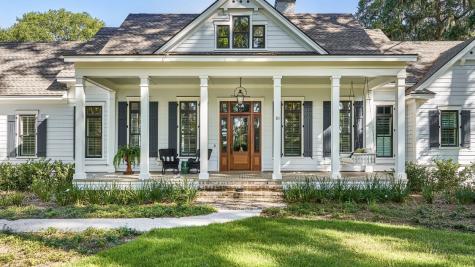What is in Bloom for the 2016 Real Estate Market

The overall tone for housing in 2016 is positive, according to a recently released Clear Capital Home Data Index™ (HDI™), with projected home price appreciation in the range of 1 percent to 3 percent by January 2017. Although this range historically has represented a stable housing market, it’s significantly lower than the 5.1 percent growth rate during 2015 and the 6.6 percent growth rate in 2014, demonstrating continued market instability and a trend of decreasing rates. This data and real estate market commentary was shared with us by our trusted colleague in Charleston, Elise Kennedy of Carolina One. Here’s our quick synopsis:
- Inexpensive homes will appreciate more (homes under $116,000)
- Slower appreciation in mid range priced homes (homes $116,000-$337,000)
- Higher priced homes will see mild appreciation (homes above $337,000)
Some would love to sugarcoat the HDI data and declare that 2016 merely will be a normalization of the housing market to historical averages not seen since the late 1990s, several factors indicate that it could be another volatile year leading to ongoing uncertainty about the future of American housing.
Ultimately, overall national growth will be positive throughout 2016, but these rates are underwhelming and signal the end of the explosive growth typical of the first half of this decade. The forecast is predicting an average of only 0.4 percent quarter-over-quarter (QoQ) growth for each quarter during 2016. Growth in this range is rather lackluster when compared to the previous two years, when home prices grew by an average of 1.5 percent quarterly over the period from January 2014 to January 2016.
Homes in the low tier (selling below $116,000 nationwide) are forecasted to appreciate more significantly than other tiers during the next year, averaging just under 1.0 percent quarterly growth throughout 2016. By definition, the low tier is affordable to the widest range of potential homeowners and investors. This larger class of buyers will likely cause continued higher appreciation for the country’s most affordable home tier.
The overall trend of decreasing rates of growth during 2016 will primarily affect the middle price tier—representing the middle 50 percent of all transactions, currently comprised of homes selling between $116,000 and $337,500 nationwide. While growth in the middle price range is not projected to be the lowest of all the price tiers, the mid-tier shows a consistent decrease in quarterly growth over the forecast period, falling from 0.5 percent QoQ growth in January 2016 to just under 0.2 percent QoQ by the end of the year.
Conversely, the top price tier (homes selling above $337,500 nationwide) forecasts relatively consistent quarterly growth, hovering around the 0.2 percent QoQ mark. Historically, pricing in this class of homes has moved slowly in the sense that gains and losses both have been smaller by percentage due to higher initial prices. The contrast to the low tier highlights the diversity in performance that remains in today’s real estate market.
The forecast also shows a similar story for the Northeast, South, and Midwest regions of the nation: positive but relatively slow gains. The Midwest is projected to be the fastest-growing region in the country with an average rate of 0.6 percent quarterly growth (2.5 percent annual) over the forecast period, while the South is close behind with an average of 0.5 percent QoQ growth (2.0 percent annual) during the same period. The Northeast lags behind these regions, projecting an average uptick of only 0.1 percent QoQ growth (0.4 percent annual) throughout 2016.
At an annualized rate, these current levels would project to roughly half of the performance seen in 2015. While slower growth is typical during the winter real estate off-season, it remains to be seen how or if the markets will adjust once the typical market rush of spring begins.
Generally, year-over-year growth rates are forecasted to be lower for all MSAs in the nation, with no exceptions. The highest growth in 2016 is forecasted to occur in Denver, where home prices are projected to grow by 7.7 percent during the course of the upcoming year, compared to the 11.7 percent annual growth seen in 2015.
While slower growth plagues the forecasts of all major cities across the nation, the luxury markets are among the hardest hit. Miami and San Jose are projected to grow by only 1.3 percent and 1.4 percent respectively during 2016, after each MSA saw market growth in excess of 10 percent during 2015. Other cities like Chicago, New York, and San Francisco are forecasted to see significant changes to their 2015 performance, with little to no growth for the upcoming year.
“The market continues to move forward, yet the bumps of volatility still remain,” says Alex Villacorta, Ph.D., vice president of research and analytics at Clear Capital. He continues “ While the real estate market is typically cold in January, it’s difficult to tell if the effects of these market changes have been realized quite yet. Until the market gets a chance to really heat up again—or not—in the spring, our models are staying consistent and forecasting a significant drop in growth for 2016.”
The bottom line to us, if you were waiting to sell your home near the top of the market, it may have arrived. With home inflation seemingly stable, this may be the best year to initiate both a sale and purchase. A possible double edged sword, if the stock market continues to fall, it may drive real estate prices up as investors seek a ‘flight to safety’. And it’s anyone’s guess about how the results of the presidential election will play out. We’re curious about your thoughts and invite you to share a comment.








